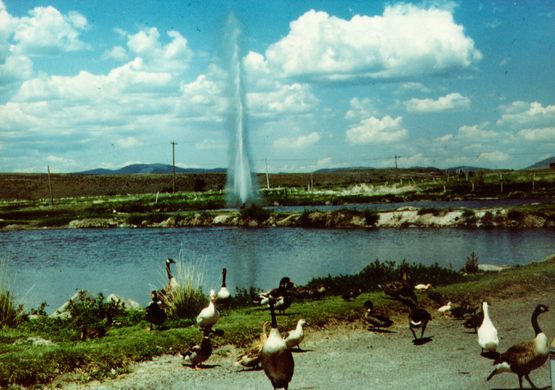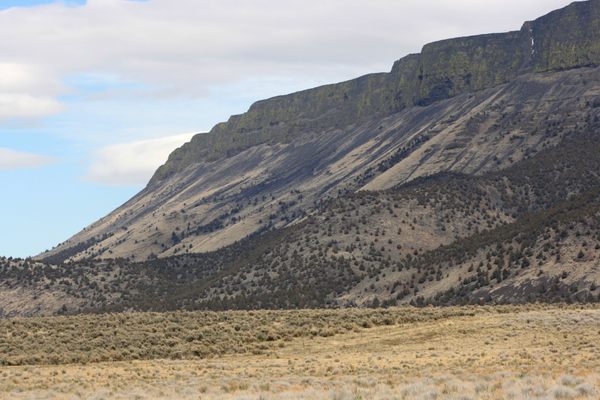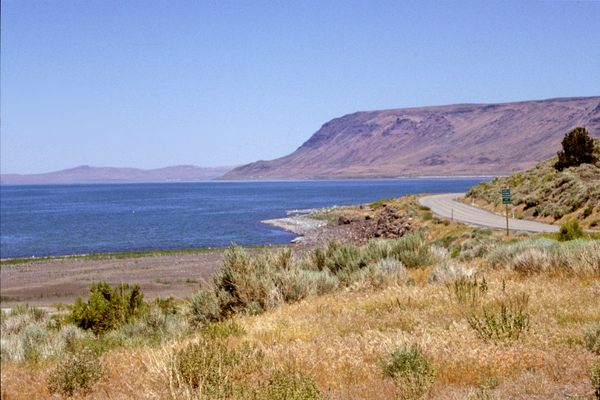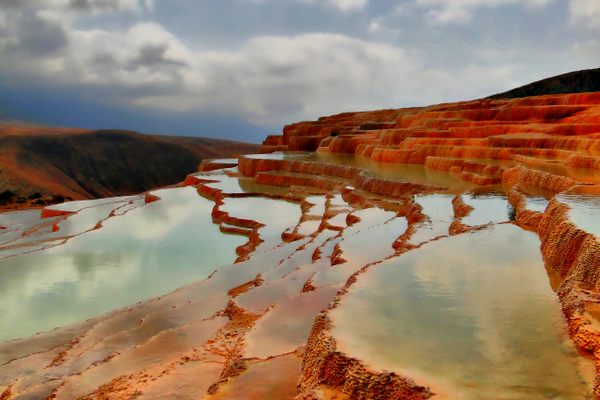AO Edited
Old Perpetual Geyser
Along the Outback Scenic Byway, adjacent to hot springs, this human-made geothermal feature takes unexplained breaks.
Although the hot springs were known to European explorers since the 1830s (when fur trappers found a marsh too hot to wade through), the star feature here is the result of a well-drilling operation exactly a hundred years ago (1923), carried out by the resort owner who hoped to increase the rate of upwelling hot water for his guests to relax in. Three separate wells were bored on his property, with the initial intent being only that the capacity of the health resort could be increased.
All three sites resulted in geysers that shot 200-degree Fahrenheit water every few minutes. This was originally considered unfortunate, as tired cowboys and ranch hands could not relax and float atop a near-boiling fire hose with a semi-random rate of eruption. However, with photography becoming increasingly affordable, transportable, and easy to use at the time, coupled with the fact that Lake County was even more sparsely inhabited then than it is now, the geysers soon became the most popular attraction for miles around.
Sadly, within a decade, two of the geysers had ceased erupting at all. Still, Old Perpetual weathered whatever mysterious event the other geysers could not, and fired at regular 40 to 100-second intervals (which changed throughout the year as the water table was affected by snowmelt). However, at the most recent turn of the century, it seemed even the most resilient geyser at Hunters Hot Springs was planning to disappear as unexpectedly as it arrived: around the end of August, it would cease erupting, returning in November for several years.
In 2009, the unexplainable pauses grew longer, and the geyser was hesitantly considered dormant. It no longer erupted for long periods of time, and was very sporadic when it did. Discussions of what had killed the beloved water feature ranged from increased agricultural use (less water in the water table), a local geothermal power project (less heat for the pressurization of the water), or simply plain bad luck. However, as of the winter of 2015, Old Perpetual has returned to its young and unreliable beginnings: Outside of mysterious autumn silences, it fires every 70-90 seconds, reaching 50 feet high (15 meters).
Although no longer billed as medicinal, the resort remains open, and the mineral water pools (sans geyser or marsh) are kept just above body temperature, and are available to all guests. Despite the many changes the last century has brought, a visit to Old Perpetual still includes remote roads through sagebrush, stark geological features, and friendly ranchers doing their best to get by.
Know Before You Go
Although the Oregon Outback and high desert are beautiful and worth a visit, if you are heading here from the Willamette Valley, a day trip is challenging due to the distances involved, and parts of the trip can be snowed out in winter, or in extreme heat in summer. Considering the unexplainable fall dormancy period (which sometimes does not occur), this leaves spring as the most convenient time to visit, although with proper planning, it is a lovely trip in any season.
Bring snow chains, something to drink, and be aware that distances are often longer than you'd assume from how they appear. Waterfowl, birds of prey, mule deer, pronghorns, and sandhill cranes are also visitors to the area, which can be found about two miles north of the Lake County seat, Lakeview.















Follow us on Twitter to get the latest on the world's hidden wonders.
Like us on Facebook to get the latest on the world's hidden wonders.
Follow us on Twitter Like us on Facebook